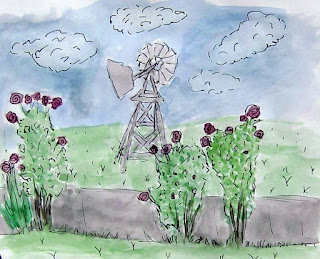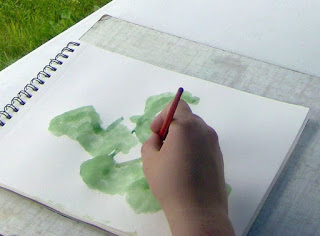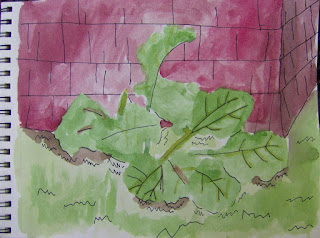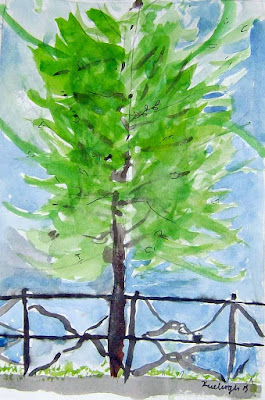
This week we tried adding details in ink to our watercolor sketches. We started with a watercolor sketch from last week's art class.
It was not our goal to add extreme detail to the paintings, but rather to indicate shadows and textures using an ultra-fine Sharpie for short lines and scribbles.

To start, find an eye-catching subject, such as this rhubarb plant in front of a red house... hmmm, interesting!
(The EZ Up pole could be distracting, but this artist simply ignored it.)

Next, sketch in the basic shapes lightly in pencil (if desired), or in watercolor, as this artist did.

Additional greens are added to the plant. Then a lighter green is painted to represent the lawn, and a few shades of red to fill in the background.

The dry painting is now ready for a little ink work. The artist added veins in the leaves, shadows, texture to represent grass, and some impressive shingles in the house!

Here is a weeping aspen tree that lives across the street. The artist added the chain link fence using her Sharpie.

This windmill was drawn in ink on top of a completed painting of a shady area under a huge evergreen tree. The artist also added scribbly "needles" and texture to the tree bark.

Only a few of the flowers in this rose bush are outlined, giving it a delicate, refined look.
As we always say, "less is more!"
There is very little ink work in this painting. The artist chose paint instead of ink for the fence, which gave it a more delicate, graceful look.



















